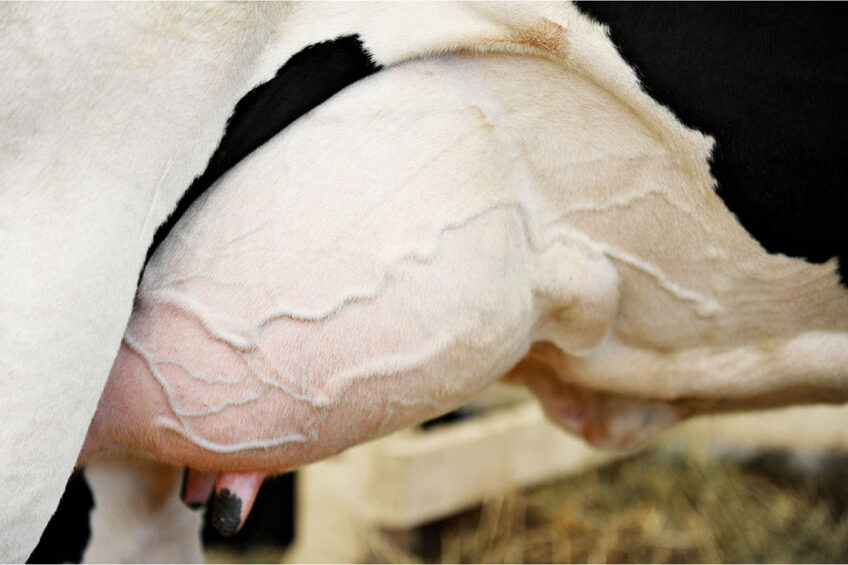Risk factors for severity of clinical mastitis in dairy cows

Research work shows a lack of evidence of factors influencing the severity of clinical expression of mastitis. Researchers of the current study elaborate on the association of the risk factors with severe mastitis cases.
Previous studies point to the severity of clinical symptoms being influenced by an interplay of predisposing factors such as endogenous defence mechanisms, the functionality of glandular tissue in the udder, and treatment success.
As it is unclear which traits characterise animals at risk for developing severe mastitis, managing high-risk animals should be facilitated by identifying starting points associated with severe mastitis. Knowledge of the traits involved can form the basis for randomised controlled trials focusing on the exact influence of these factors on the severity of mastitis. Thus, researchers of this study performed a cross-sectional field study to determine factors associated with severe mastitis. Their results were published in the Pathogens journal.
The cross-sectional study
The present cross-sectional study was conducted on 65 dairy farms in north-western Germany between May 2020 and May 2021. Milk samples of clinical mastitis were collected by farm managers and veterinarians from udder quarters with clinical signs. The classification of clinical mastitis into severity levels was made based on International Dairy Federation definitions. Most of the mastitis cases in this study were either mild or moderate, with 21.1% being severe.
Pathogen group and shedding
A large proportion of mastitis cases were caused by environmentally associated microorganisms. The most frequently isolated pathogen was Streptococcus uberis (Str. Uberis) (29.9%), followed by coliform pathogens (22.2%).
On mastitis severity, coliform pathogens were the most common finding (42.2%) in severe cases of mastitis, while Str. uberis was significantly more common in udder quarters with moderate mastitis than in udder quarters with mild and severe cases of mastitis.
The mastitis-causing pathogen group and pathogen shedding were not associated with the clinical expression of the severity of mastitis. However, the interaction between the pathogen group and pathogen shedding was significantly associated with the severity of the clinical expression of mastitis. For example, the combination of the coliform pathogens and increasing pathogen shedding, and the combination of other pathogens (not Str. uberis, coliform pathogens, Corynebacterium species, S. aureus) and increasing pathogen shedding were associated with severe cases.
In this study ‘other pathogens’ included Prototheca species, Bacillus species, Enterococcus species, yeast, Pseudomonas species, Str. dysgalactiae, Str. agalactiae, other streptococci, Trueperella (T.) pyogenes, and Serratia species. Regarding the coliform pathogens, the presence of many coliform pathogens in milk was associated with more severe mastitis cases. In other similar studies, severe mastitis cases were also primarily caused by environmentally associated pathogens, while cow-associated pathogens, such as S. aureus and ß-hemolytic streptococci, were commonly associated with subclinical and mild mastitis. Among other possible explanations, higher pathogen shedding (a symptom of severe mastitis) was attributed to the excessive release of endotoxins, which are a decay product of the outer cell membrane of Gram-negative bacteria.
Stage of lactation
Most clinical mastitis cases in this study occurred in the first 100 days of lactation (44%), in equal proportions between the 101st and 200th day of lactation (27.3%), and in late lactation after the 200th day of lactation (28.7%). Severe cases were significantly more common in early lactation than in mid and late lactation.
Predisposing conditions were explained, for example, ketosis mainly occurs in early lactation and influences the immune system. On the other hand, hormonal changes in the form of increased concentrations of sex steroids and glucocorticosteroids from the neuroendocrine system were suggested to weaken the number and function of polymorphonuclear neutrophil granulocytes (part of the innate immune system) around parturition and at the beginning of lactation. In addition, immunosuppression is often associated with oxidative stress and low antioxidant defence at this stage of lactation.
Disease predisposition
Among all mastitis cases in the study, previous diseases in total were significantly more common in cows with severe mastitis than in cows with mild or moderate mastitis. It was reviewed that having a disease within 14 days before the onset of mastitis was associated with the severity of clinical expression of mastitis. However, no association could be shown between mastitis as a previous disease and the severity of subsequent cases of mastitis.
Ketosis and uterine diseases were significantly more common in severe mastitis cases than in moderate and mild mastitis cases. Mastitis and hypocalcaemia occurred more frequently as a previous disease in mild mastitis cases than in moderate and severe mastitis cases. Similarly, lameness in cows occurred less in association with mild mastitis than in association with moderate and severe mastitis.
Of the 854 cows participating in this study, 2.7% were treated with corticosteroids within 2 weeks prior to mastitis, and pre-treatment with corticosteroids was significantly more common in severe cases than in moderate and mild cases. It was highlighted that cortisone-based agents lead to immunosuppression.
Cows with hypocalcaemia prior to the mastitis case had lower odds of having severe mastitis but mild cases of mastitis. Increased incidence risk in hypocalcemic cows compared with non-hypocalcemic cows has been associated with lower teat end sphincter muscle tone and increased exposure of the teat to environmentally associated pathogens due to prolonged recumbency.
The combined therapy of hypocalcemia with rapid compensation of blood calcium levels, application of an anti-inflammatory agent, and fluid therapy may have an influence resulting in milder severity of mastitis. In addition, researchers stated that cows that have had hypocalcaemia may be under closer observation due to the known increased incidence risk, so mastitis is detected earlier.
On a different note, the distribution of severity with respect to seasons showed that severe mastitis is more frequent in summer compared to moderate and mild mastitis cases.
Conclusion
In this study, several factors were found to be associated with the severity of the clinical expression of mastitis in dairy cattle. Dairy cows treated with corticosteroids for 14 days prior to mastitis were associated with more severe cases of mastitis. It can be concluded that the interaction of coliform pathogens and high pathogen shedding showed associations with severe mastitis.
The early lactation stage was an animal-related influencing factor in association with more severe cases of mastitis. As another animal-associated factor, dairy cows predisposed to hypocalcaemia were associated with milder clinical expression of mastitis. Besides the observed associations in this cross-sectional study creating a basis for experimental studies, researchers highlighted that research gaps still exist regarding the extent of influence of herd-related factors on the severity of this disease.
Join 13,000+ subscribers
Subscribe to our newsletter to stay updated about all the need-to-know content in the dairy sector, two times a week.










